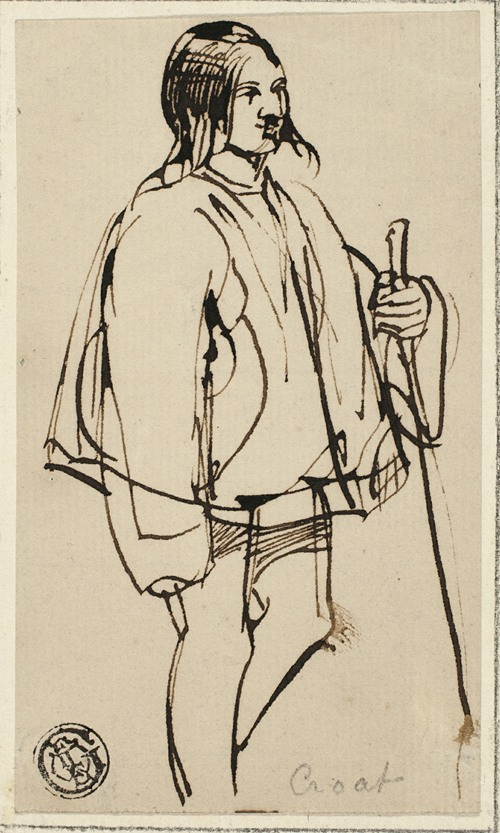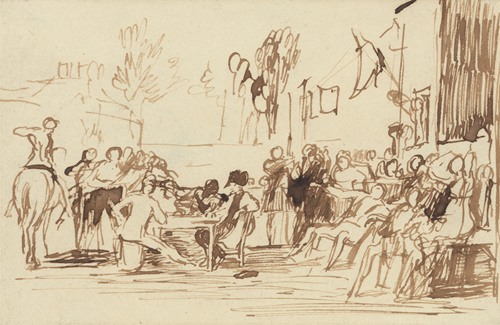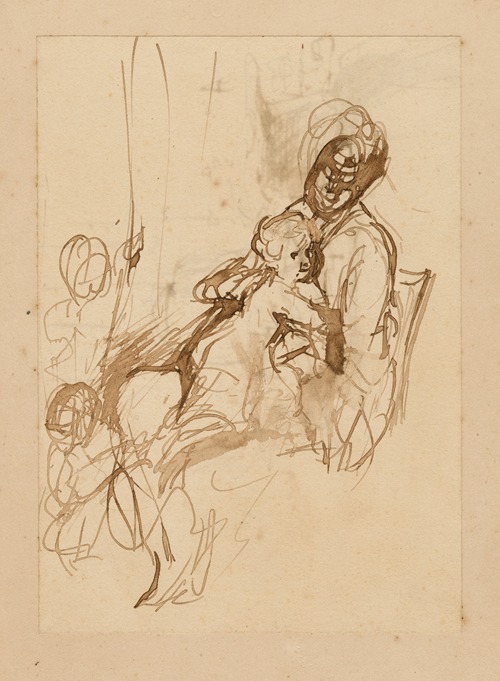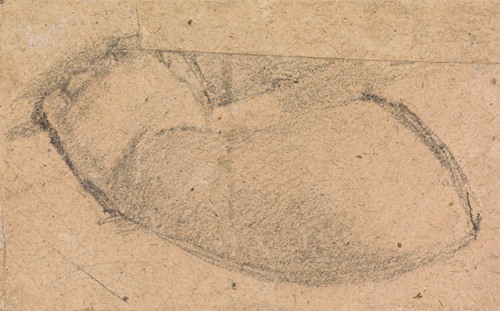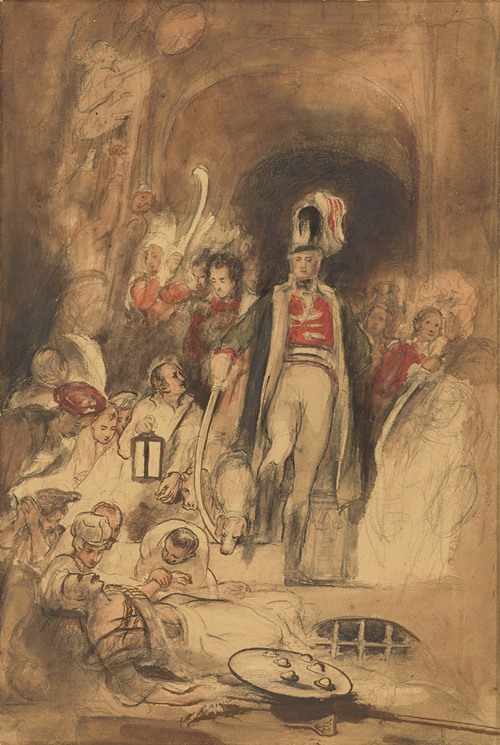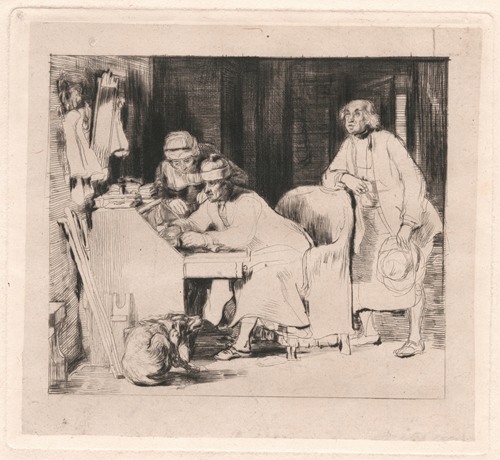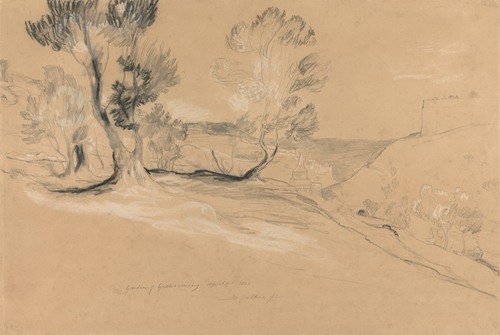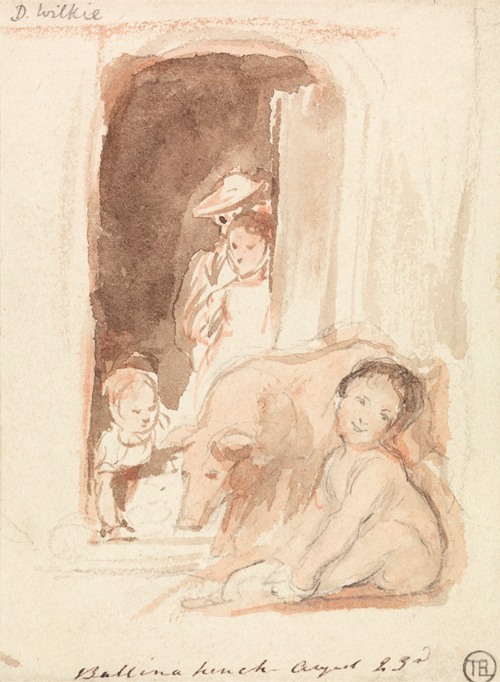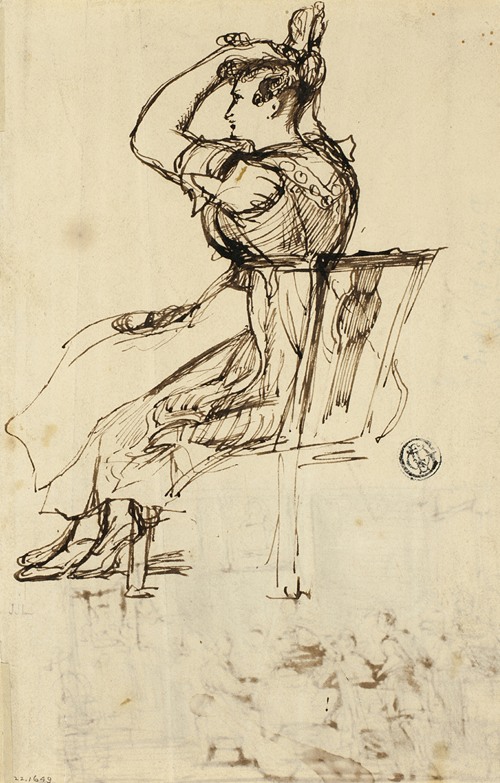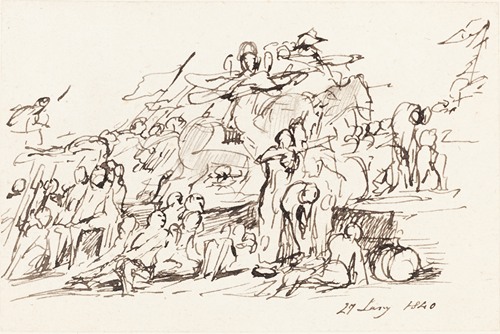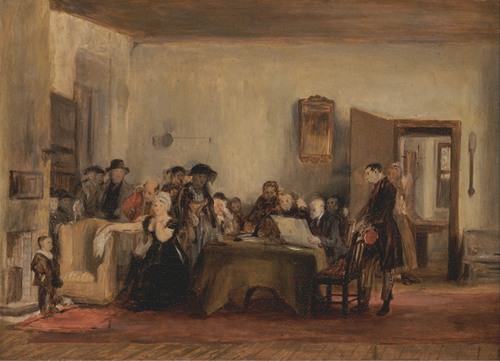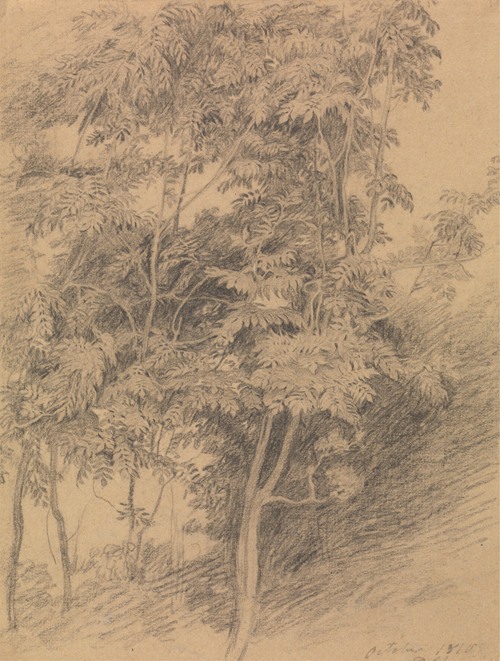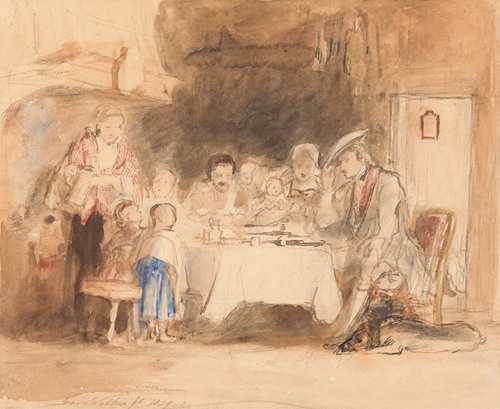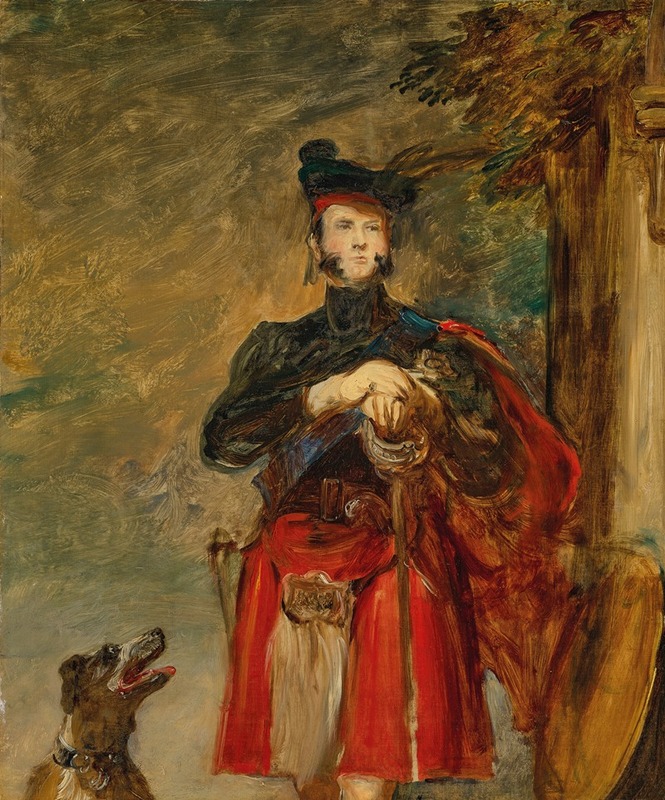
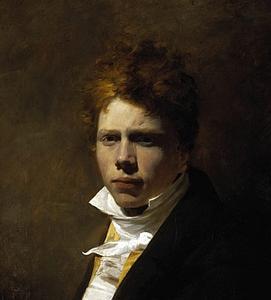
Sir David Wilkie was a British painter, especially known for his genre scenes. He painted successfully in a wide variety of genres, including historical scenes, portraits, including formal royal ones, and scenes from his travels to Europe and the Middle East. His main base was in London, but he died and was buried at sea, off Gibraltar, returning from his first trip to the Middle East. He was sometimes known as the "people's painter".
He was Principal Painter in Ordinary to King William IV and Queen Victoria. Apart from royal portraits, his best-known painting today is probably The Chelsea Pensioners reading the Waterloo Dispatch of 1822 in Apsley House.
David Wilkie was born in Pitlessie Fife in Scotland on 18 November 1785. He was the son of the parish minister of Cults, Fife. Caroline Wilkie was a relative. He developed a love for art at an early age. In 1799, after he had attended school at Pitlessie, Kingskettle and Cupar, his father reluctantly agreed to his becoming a painter. Through the influence of the Earl of Leven Wilkie was admitted to the Trustees' Academy in Edinburgh, and began the study of art under John Graham. From William Allan (afterwards Sir William Allan and president of the Royal Scottish Academy) and John Burnet, the engraver of Wilkie's works, we have an interesting account of his early studies, of his indomitable perseverance and power of close application, of his habit of haunting fairs and marketplaces, and transferring to his sketchbook all that struck him as characteristic and telling in figure or incident, and of his admiration for the works of Alexander Carse and David Allan, two Scottish painters of scenes from humble life.
Among his pictures of this period might be mentioned a subject from Macbeth, Ceres in Search of Proserpine, and Diana and Calisto, which in 1803 gained a premium of ten guineas at the Trustees' Academy, while his pencil portraits of himself and his mother, dated that year, and now in the possession of the Duke of Buccleuch, prove that Wilkie had already attained considerable certainty of touch and power of rendering character.[according to whom?] A scene from Allan Ramsay, and a sketch from Hector Macneill's ballad Scotland's Skaith, afterwards developed into the well-known Village Politicians.
In 1804, Wilkie left the Trustees' Academy and returned to Cults. He established himself in the manse there, and began his first important subject-picture, Pitlessie Fair (illustration), which includes about 140 figures, and in which he introduced portraits of his neighbours and of several members of his family circle. In addition to this elaborate figure-piece, Wilkie was much employed at the time upon portraits, both at home and in Kinghorn, St Andrews and Aberdeen. In the spring of 1805 he left Scotland for London, carrying with him his Bounty-Money, or the Village Recruit, which he soon disposed of for £6, and began to study in the schools of the Royal Academy.
In November 1809 he was elected an associate of the Royal Academy, when he had hardly attained the age prescribed by its laws, and in February 1811 he became a full Academician. In 1812 he opened an exhibition of his collected works in Pall Mall, but the experiment was financially unsuccessful.
In the beginning of 1830 Wilkie was appointed to succeed Sir Thomas Lawrence as painter in ordinary to the king, and in 1836 he received the honour of knighthood. The main figure-pictures which occupied him until the end were Columbus in the Convent at La Rabida (1835); Napoleon and Pius VII at Fontainebleau (1836); Empress Josephine and the Fortune-Teller (1837); Queen Victoria Presiding at her First Council (exhibited 1838); and General Sir David Baird Discovering the Body of Sultan Tippoo Sahib (completed 1839). His time was also much occupied with portraiture, many of his works of this class being royal commissions. His portraits are pictorial and excellent in general distribution, but the faces are frequently wanting in drawing and character. He seldom succeeded in showing his sitters at their best, and his female portraits, in particular, rarely gave satisfaction. A favourable example of his cabinet-sized portraits is that of Sir Robert Liston; his likeness of W. Esdaile is an admirable three-quarter length; and one of his finest full-lengths is the gallery portrait of Lord Kellie, in the town hall of Cupar.
In the autumn of 1840 Wilkie resolved on a voyage to the East. Passing through the Netherlands and Germany, he reached Constantinople, where, while detained by the war in Syria, he painted a portrait of the young sultan. He then sailed for Smyrna and travelled to Jerusalem, where he remained for some five busy weeks. The last work of all upon which he was engaged was a portrait of Muhammad Ali Pasha, done at Alexandria. On his return voyage he suffered from an attack of illness at Malta, and remained ill for the remainder of the journey to Gibraltar, eventually dying at sea off Gibraltar, en route to Britain, on the morning of 1 June 1841. His body was consigned to the deep in the Bay of Gibraltar. Wilkie's death was commemorated by Joseph Mallord William Turner in the oil painting titled Peace—Burial at Sea.

